How to Have Neat Handwriting (original) (raw)
Improve your penmanship with these simple tips from a handwriting expert and professional calligrapher.
Now Trending
1 / 12
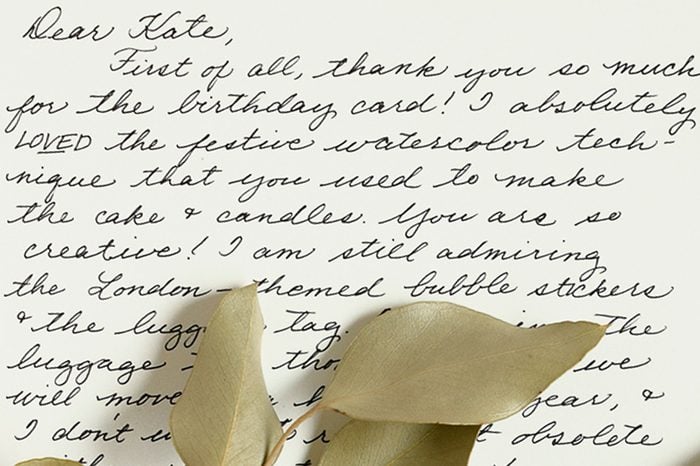
The power of the pen
When the entire world is communicating via texting, email, or social media, it’s easy to forget about the value of good penmanship. Handwriting is still an important skill for many reasons; including that writing by hand contributes to reading fluency and helps with memory recall, not to mention that a handwritten note instantly feels more heartfelt than an electronic one. Writing down notes or messages is only half the battle—neat handwriting doesn’t come naturally to everyone. Good penmanship takes time and practice. Calligrapher and handwriting expert Lindsey Bugbee of The Postman’s Knock shares her practical tips for improving your handwriting. Here’s how writing by hand makes you smarter.
2 / 12
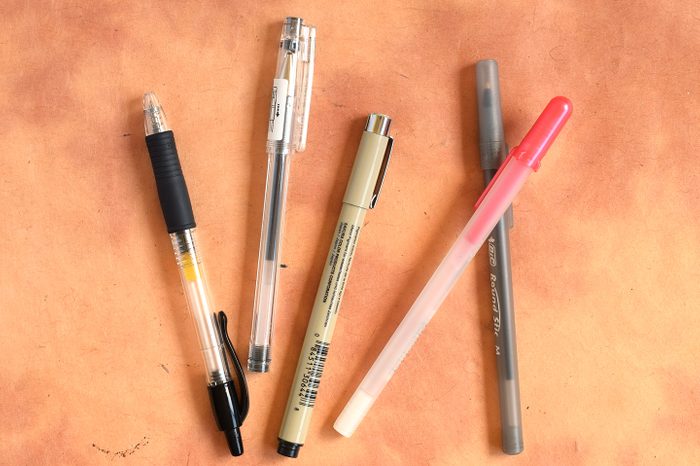
Courtesy Lindsey Bugbee
Treat yourself to a nice pen
A quality pen not only makes the process of writing more pleasant as it will glide across the paper, but the right pen will also help you have neat handwriting. “The foundation of a positive writing experience is nice materials,” says Bugbee. If you don’t already own a pen you love, treat yourself to a new one. Gel pens are great for beginners because they write smoothly and one with a fine tip will help your writing look neater. Bugbee recommends a Pentel Energel or Pilot G2.
3 / 12
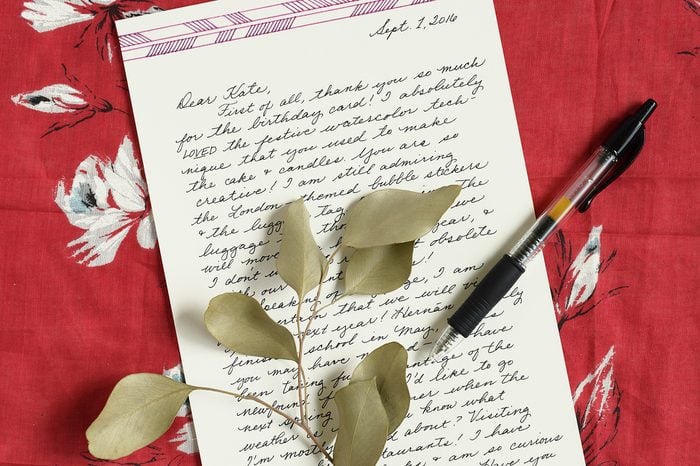
Courtesy Lindsey Bugbee
Pick the perfect paper
The type of paper you use will affect the appearance of your letters. “The more tooth your paper has, the more difficult it will be to write on,” says Bugbee. She recommends using smooth, fairly thick paper, whenever possible; her favorite paper stocks are from Rhodia, Clairefontaine, and Tomoe River or the budget-friendly HP Premium 32# Laserjet paper.
4 / 12
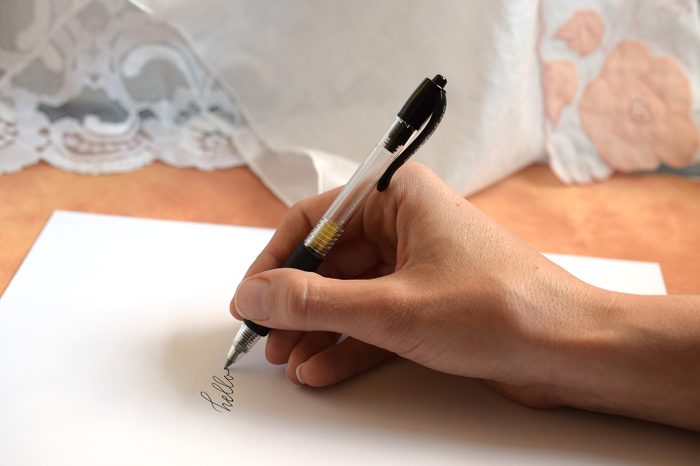
Courtesy Lindsey Bugbee
Relax your grip
While it’s natural to think that a close, tight grip on your pen will lead to more controlled, neat handwriting, Bugbee says it’s the opposite that’s true. “That tightness will backfire—leading to shaky strokes and angular letters,” she warns. So relax your grip. “You’ll notice that your letters have a more fluid, easy look to them,” she says. Next, find out the handwriting analysis experts have for you.
5 / 12
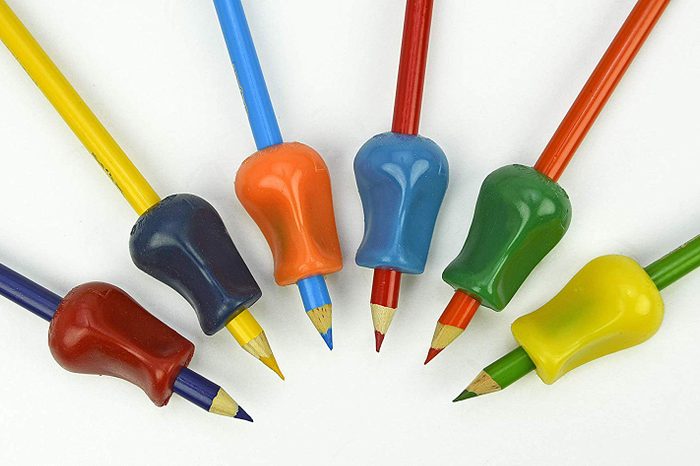
via amazon.com
Experiment with a pen grip
If you have a hard time relaxing your grip, a pen grip that you slip your pen of choice into can help you have neat handwriting “A pen grip forces your fingers to write in a position that should be comfortable and effective,” Bugbee explains. Pen grips are inexpensive and will fit not only most pens, but also pencils, crayons, markers, or paintbrushes. These are the times etiquette dictates you send a handwritten thank-you note.
6 / 12
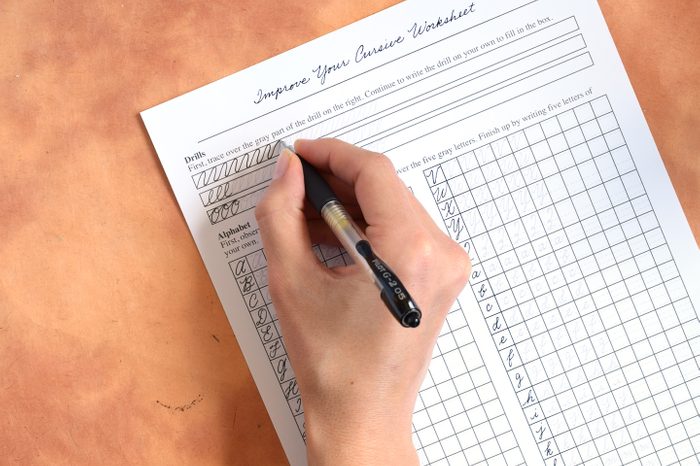
Courtesy Lindsey Bugbee
Practice, practice, practice
As the old adage goes, practice makes perfect. “If you’re really serious about improving your handwriting, do some drills to address problem strokes,” suggest Bugbee. Copy quotes or passages from books to get more handwriting practice or try the free cursive worksheet Bugbee offers on her website. If you’re really serious, you can sign up for Bugbee’s handwriting course.
7 / 12

Courtesy Lindsey Bugbee
Pace yourself
Don’t write too slow or fast—find a happy middle. “If you write too quickly, you’ll sacrifice neatness. Write too slowly, and you’ll notice shaky strokes,” cautions Bugbee. A nice, medium speed is the sweet spot.
8 / 12
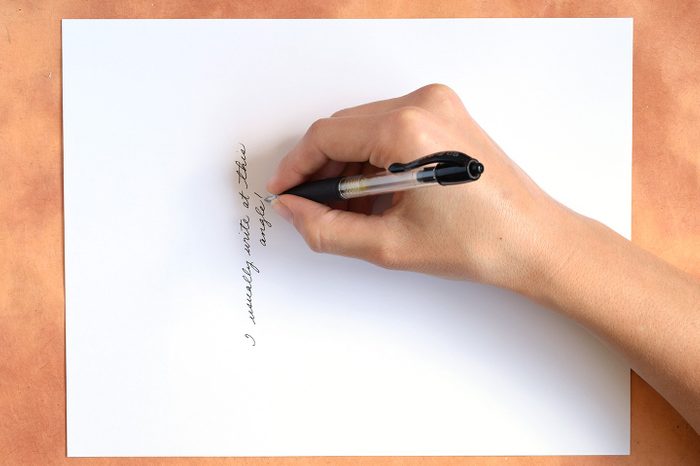
Courtesy Lindsey Bugbee
Experiment with paper positions and rotations
A common mistake many people make it keeping their paper straight up and down in front of them. “This actually facilitates an additional obstacle to good handwriting, as it’s difficult to achieve a position that gives you an optimal writing angle,” Bugbee says. Instead, she suggests that right-handed people rotate their paper counter-clockwise and left-handed people rotate their paper clockwise.
9 / 12
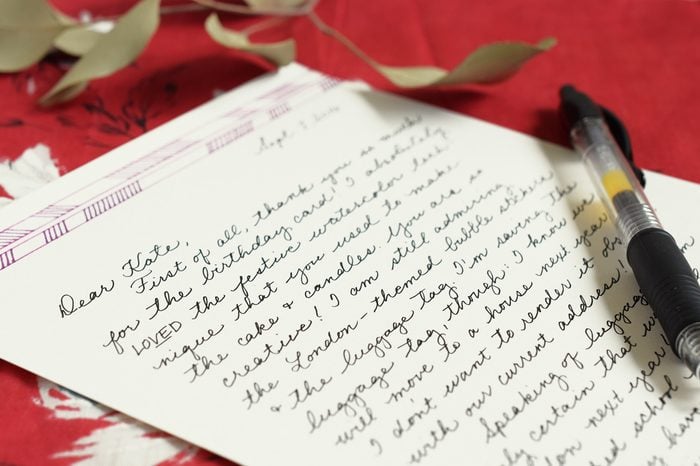
Courtesy Lindsey Bugbee
Write as much as possible
“Like with any other skill, the more you use your handwriting, the more you’ll be able to refine your technique,” says Bugbee. Some ways to sneak in practice is to write a letter instead of an email or write out your grocery list or to-do list instead of tracking them electronically. “Any practice is quality practice,” she says. Cursive is one of 9 subjects that you took in school that your kids won’t have to.
10 / 12
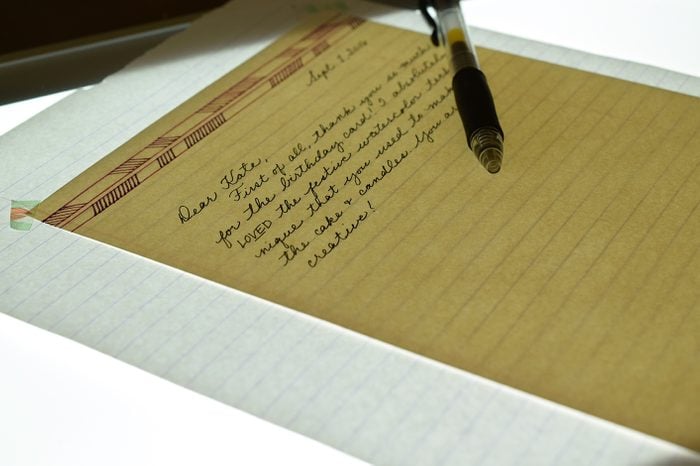
Courtesy Lindsey Bugbee
Write on lined paper or use a template
Students use lined paper for a reason; lined paper helps you maintain a consistent baseline and maintain margins, which will immediately make your handwriting look neat and tidy. If you want your handwriting to look great without writing on lined paper, Bugbee suggests using a template. “You can put a piece of notebook paper under printer paper or stationery,” she explains, “More than likely, you’ll be able to see the notebook paper lines through the paper, and you can use those lines as guidelines for even writing.”
11 / 12
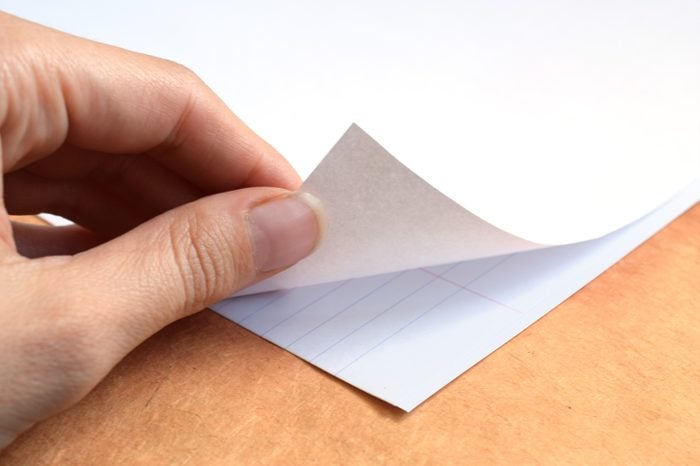
Courtesy Lindsey Bugbee
Use padding paper
Having extra cushion underneath your writing paper is another trick to making your writing feel and look smoother. “Regardless of your pen and paper combination, a piece of padding paper under the paper you’re working on is key,” says Bugbee. You can use any piece of paper as padding paper. Try this one-minute trick that will instantly improve your handwriting.
12 / 12
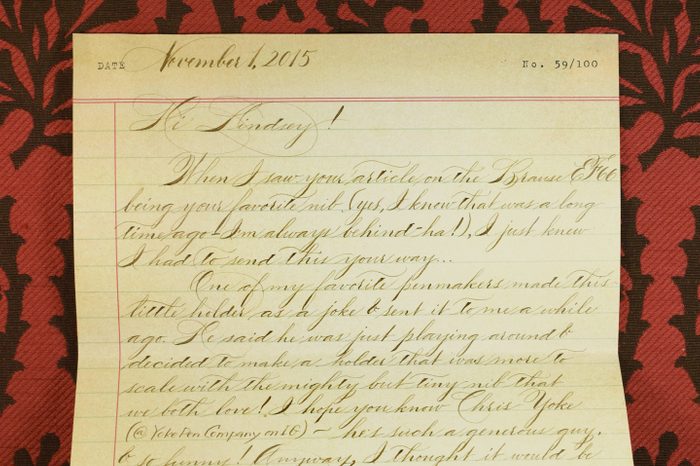
Courtesy Lindsey Bugbee
Search for handwriting examples online
“Your handwriting will always be an ever-evolving quilt that incorporates your personality with letters that you’ve seen, liked, and decided to use,” says Bugbee. She suggests actively searching for handwriting examples that inspire you, then trying to write in a similar style for practice. Lindsey looks to “Penmanship Porn” on Reddit to discover different styles of attractive penmanship.